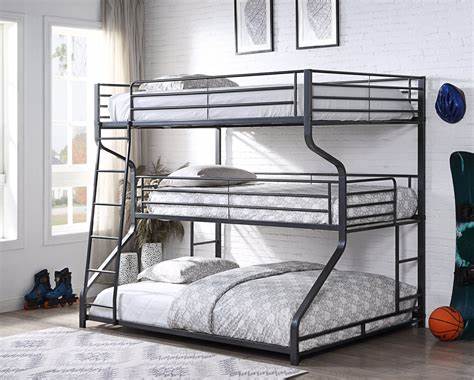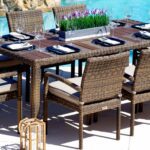Bunk beds are a popular choice for families looking to maximize space while adding a fun element to their children’s bedrooms. They are practical, stylish, and perfect for shared rooms. However, choosing the right bunk bed involves more than just selecting a design. Safety, durability, and functionality should be top priorities to ensure a comfortable and secure sleeping environment for your kids.
This guide will walk you through essential considerations when selecting a bunk bed for kids, ensuring both safety and style in your child’s room.
Why Are Bunk Beds So Popular?
Bunk beds offer several advantages, making them a preferred choice for modern homes:
- Space-Saving Solution – Perfect for small bedrooms, bunk beds free up floor space for storage, play areas, or study desks.
- Extra Sleeping Space – Great for siblings sharing a room or sleepovers. Some designs even include a third pull-out bed.
- Versatility in Design – Available in various materials, colors, and configurations, including detachable models that convert into separate beds.
- Fun and Engaging – Kids love the adventure of climbing ladders and sleeping at different heights, making bedtime more exciting.
How to Choose the Right Bunk Bed for Your Kids?

1. Safety Comes First
When purchasing a bunk bed, safety should be your number one priority. Look for the following key safety features:
- Sturdy Construction – Choose a bunk bed made from high-quality wood or metal with strong joints and no wobbling.
- Guardrails – The top bunk should have guardrails on all four sides, with a height of at least 5 inches above the mattress.
- Safe Ladder Design – Ladders should be sturdy, slip-resistant, and securely attached to prevent accidents.
- Weight Capacity – Ensure the bed supports your child’s weight as they grow, especially for older kids.
The American Academy of Pediatrics advises that children under six years old should not sleep on the top bunk due to the risk of falls.
2. Consider Room Size and Layout
Before purchasing a bunk bed, measure your child’s bedroom to ensure a good fit. Consider:
- Ceiling Height – The top bunk should be at least 36 inches below the ceiling to prevent head injuries.
- Placement – Keep the bunk bed away from ceiling fans, windows, or light fixtures to avoid hazards.
- Accessibility – Ensure there is enough space for movement and that the ladder or stairs are easy to climb.
3. Choose the Right Mattress
Selecting the right mattress is essential for comfort and safety. Bunk bed mattresses should be:
- Medium-firm and supportive – Ensures spinal alignment and prevents discomfort.
- 6–8 inches thick – A thinner mattress prevents the child from rolling over the guardrails.
- Hypoallergenic and breathable – Ideal for kids with allergies, reducing dust mites and allergens.
4. Storage and Multifunctionality
Many bunk beds now come with built-in storage, which is a great way to optimize space. Consider designs with:
- Drawers under the bed – Ideal for storing toys, clothes, or books.
- Shelves and study desks – Great for school-age children who need a study area.
- Staircases with storage compartments – Provides extra space while making climbing safer.
A bunk bed with storage is a smart investment for growing families who need additional organization options.

5. Material and Durability
The choice of material determines the longevity of the bunk bed. The most common options include:
- Solid Wood – Durable, sturdy, and long-lasting. Popular choices include oak, maple, and pine.
- Metal – Lightweight, modern, and often more affordable but may wobble over time if not properly reinforced.
- Engineered Wood – A budget-friendly option but may not be as durable as solid wood.
6. Customization and Aesthetic Appeal
A well-designed bunk bed enhances the overall look of your child’s room. Consider:
- Color Theme – Neutral shades like white, beige, or gray suit most room styles, while bright colors create a playful vibe.
- Themed Beds – Some bunk beds are designed as castles, treehouses, or car shapes, making bedtime more enjoyable.
- Convertible Options – Some models can be separated into two twin beds for later use.
For inspiration, explore trendy bunk bed designs for kids to find one that complements your home décor.
Final Thoughts
A bunk bed is a smart investment for families looking to save space while ensuring their children have a fun and comfortable sleeping arrangement. Prioritize safety, durability, and functionality when making your choice, and select a design that grows with your child’s needs. For expert recommendations and stylish designs, explore the latest bunk bed options to find the perfect fit for your home.
Also Read : Dining Room Design Styles: Elevate Your Space with Elegance





